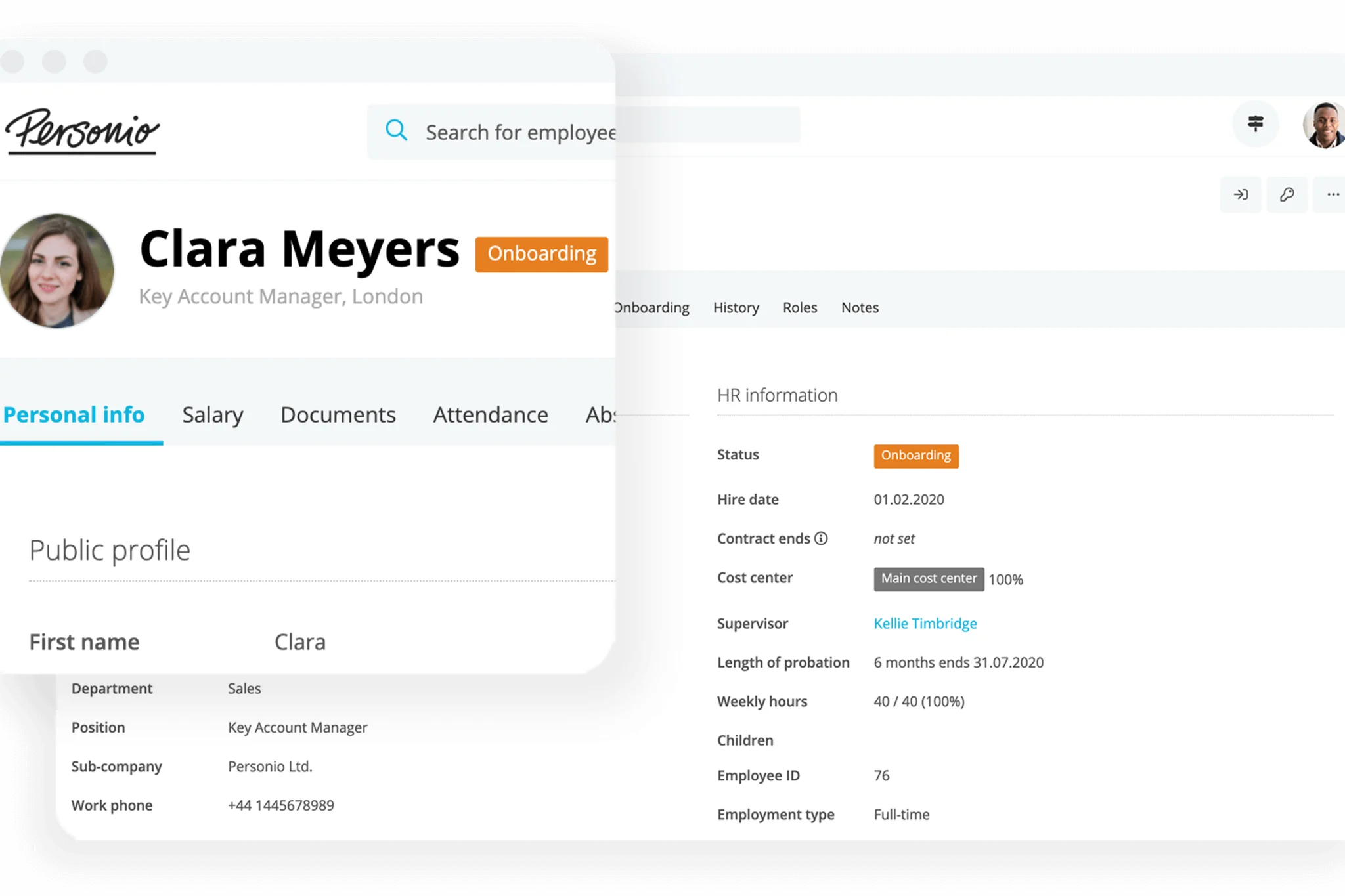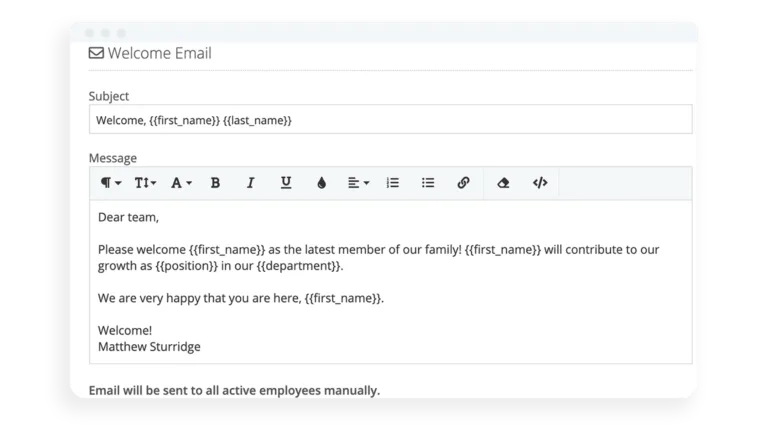
Free onboarding checklist
Ensure your employee induction days are always a success.
Download The ChecklistEmployee Induction: How to Plan an Induction Day (+ Checklist)

Need a checklist for induction at work? While some may call it onboarding, others call it an introduction and it basically means to prepare employees to succeed from their very first day of work.
But what does that entail? In this article, we offer a helpful employee induction checklist that, when paired with an automated onboarding process, can ensure employees are off to a flying start.
Assign onboarding templates within Personio's HR software. Find out how here.
Contents
- 1What is employee induction at work?
- 2What is an induction day at work?
- 3Benefits of an employee induction day program at work
- 4What to watch out for during an employee induction day
- 5Why does an induction checklist matter?
- 6Building your own checklist for new employee induction
- 7Induction process checklist: what to include when onboarding
- 8Turn your employee induction checklist into automated onboarding
What is employee induction at work?
Induction, or employee induction, is the process of introducing and helping an employee adjust to their new working environment. A large part of this process is covered during the onboarding, orientation and socialisation phases of the employee journey.
For both practical and legal reasons, an employee induction also provides the opportunity for employers to make a great first impression.
What is an induction day at work?
An employee induction can take place over a few hours, a full day or even a week, depending on the complexity of their role, the number of people and systems they interact with and the nature of their work. An induction day is often but not always the first day of someone’s employment with a company.
However, when companies have a lot of new joiners, they sometimes choose to make an official ‘induction day’ later than their first day. When this happens, someone will still need to take employees through the things they need on day one, but the employee gets further information (usually about the employers’ processes and systems) later on.
This is why an induction or onboarding checklist can prove to be so invaluable. When you have a group of people starting all at once or even on the same day, it helps to have a process that is regimented, makes sense and can make a difference for employees.
Benefits of an employee induction day program at work
A dedicated employee induction day program can offer significant advantages for both new hires and the organisation as a whole.
For new employees, an induction day provides a structured and supportive environment to ease them into their new roles. It allows them to:
Gain a comprehensive understanding: A new employee can learn about the company's mission, values and culture. This can help foster an immediate sense of belonging and purpose at work. Additionally, they can grasp their specific role's responsibilities and how it contributes to the bigger picture of business goals.
Navigate the practicalities: An induction day can equip new employees with the necessary information and tools to navigate day-to-day work. This might include administrative procedures, IT systems access and workplace logistics.
Build lasting connections: By interacting with colleagues from various departments and engaging in team-building activities, new hires can start forging relationships and feel more integrated into the company culture.
Overall, a well-designed induction day program sets the stage for a smooth transition and successful integration of new employees, contributing to their long-term engagement and positive contribution to organisational success.
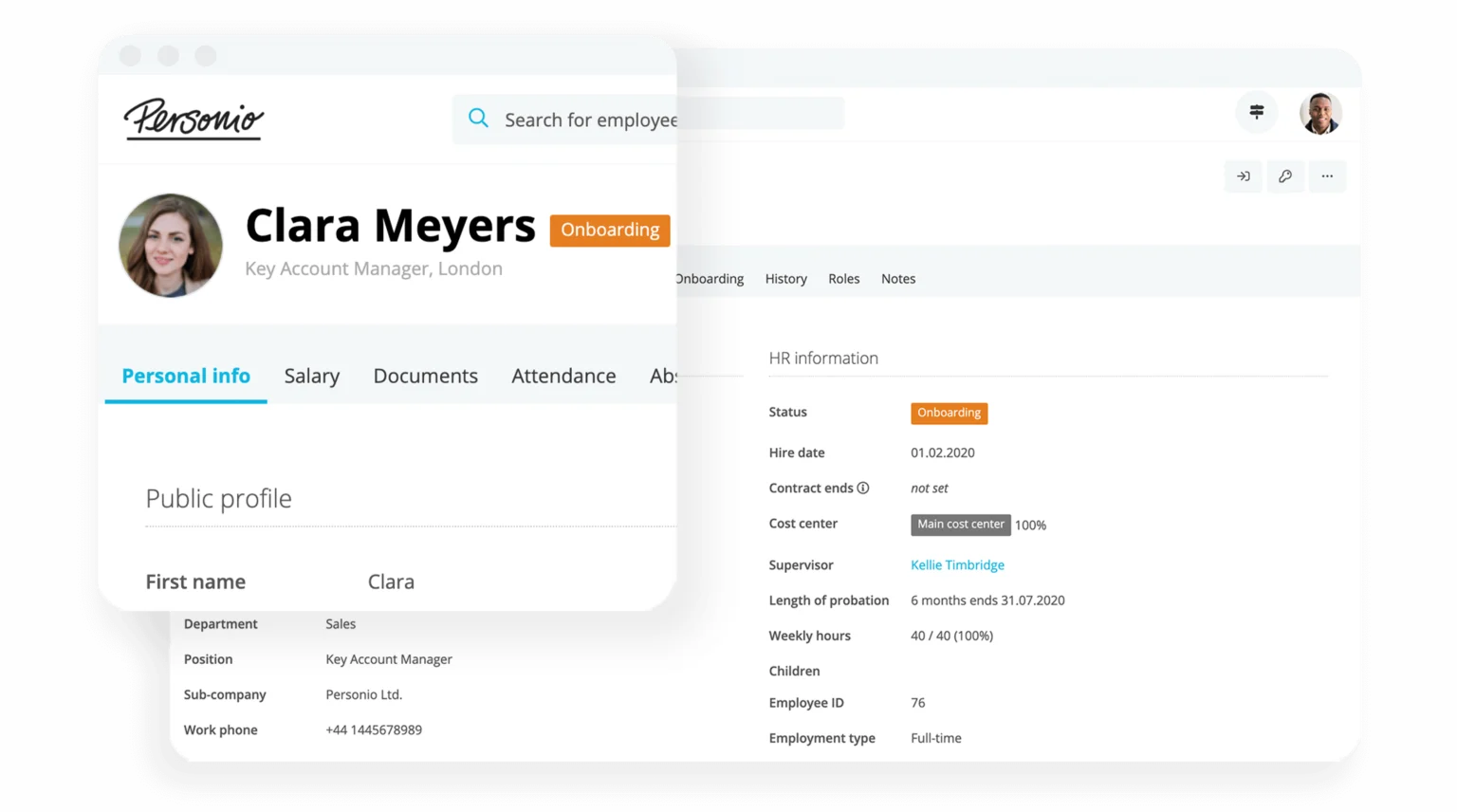
What to watch out for during an employee induction day
During an induction day, there are some things to keep an eye out for. It's important to keep these five red flags in mind before induction day rolls around:
Don’t give them too much information to process all at once. Allow them to take the time they need and to ask questions.
Don’t give them too much to do immediately. But don’t let them sit around with nothing to do, either.
Don’t expect them to get working from day one. They will need time to figure out how your systems and processes work before you can expect them to be effective.
Don’t leave them on their own for too long without support.
Don’t set unrealistic expectations. But do help them know what will help them get up and running soon and what ‘good work’ looks like.
Why does an induction checklist matter?
A great induction helps employees adjust to their new working environment and feel like part of the team. Whether you call it onboarding, orientation or even socialisation, these first few moments, hours or days can set a critical framework for future endeavours.
After all, first impressions can last a lifetime.
A good induction can have a positive effect on employee engagement, staff absenteeism, turnover and their perception of the company's employer brand.
A well-developed and streamlined onboarding helps employees settle in and feel comfortable; helps new team members build good relationships from day one; and sets expectations for acceptable behaviour, cultural norms, ethics and ways of working.
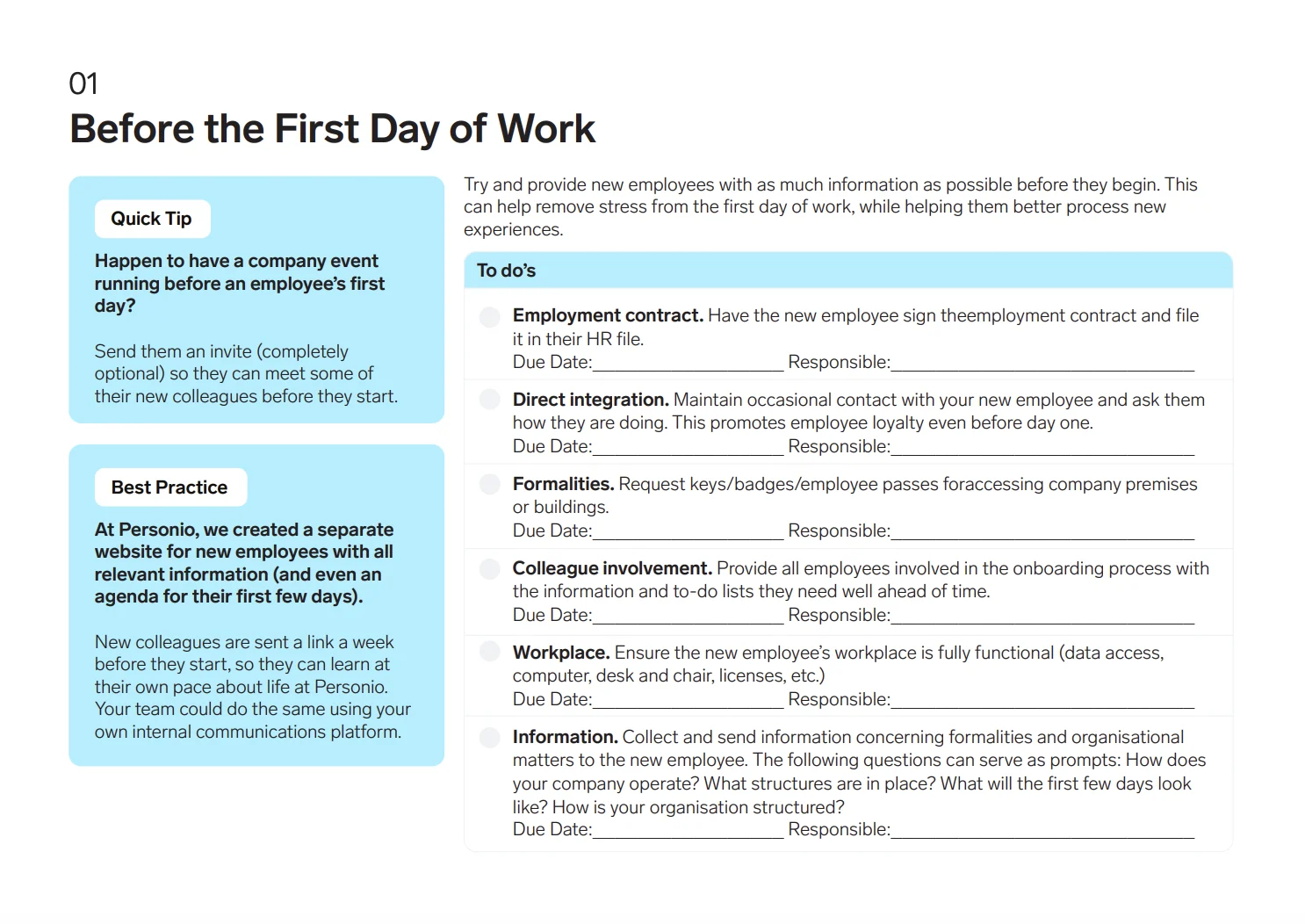
Building your own checklist for new employee induction
When thinking about creating a great employee induction it helps to answer those traditional questions of who, what, when, where, why and how.
Who?
As part of an employee induction, it’s important to explain who they will be:
Working with directly
Reporting to
Working with indirectly
Interacting with occasionally (for example, C-level executives)
One helpful way of answering the ‘who’ question is by providing an employee with an organisation chart – either in a physical, or digital format.
Discover what it takes to craft a great org chart in this helpful article.
What?
What will an employee actually do on a daily basis? No matter how good their job description is, an employee will still need to know what’s expected from them, what actual tasks need to be done, when and how.
This guide to job descriptions may also prove helpful. Click here to read more.
When?
Hopefully an employee already knows what their working hours, start times and end times are before they begin their first day of work. But it is important to double-check this and to let them know when they can take breaks – including lunch breaks.
Where?
In the past, the ‘where’ of an employee induction was fairly obvious. They work at a specific office location (unless their job requires them to travel) and sit at a specific desk. By the end of an employee induction, they must know where to go to the bathroom, how to find the emergency exits and be able to identify the location of the kitchen and any other office facilities they need to use.
But these days with hot-desking, remote working and even remote onboarding, addressing the question of ‘where’ is somewhat more complicated.
Read our complete guide to hybrid working’s most pressing questions right here.
Why?
Addressing the question of ‘why’ can be tricky in an employee induction, but having a strong, clear and clearly-defined culture can help. In this case, a company’s core values help employees reduce uncertainty when making decisions so they can concentrate on doing their jobs.
By explaining how it’s important for employees to act, sharing things you’re proud of and putting new employees in touch with great cultural ambassadors, it helps them feel part of that culture more quickly.
It also reduces uncertainty and hopefully gives employees a good feeling that makes them want to come back again the following day, week, month and year following.
How?
It’s not always possible to explain how to do the job in full on their first day. So rather than trying to cram all this information in on their induction day, it’s better to give employees a plan of how to get started and then help them along the way, regardless of what questions they have.
An induction checklist is important here, because all of the tasks may not be covered in the first day. This way, you know what has been covered and what is remaining for an employee.
Remember: It’s often nerve-racking for new employees to ask questions, particularly if they feel like the questions are foolish on their part. But helping them through this learning curve will pay dividends later.
Induction process checklist: what to include when onboarding
The following seven sections cover the essentials you must include when onboarding someone.
1. Get the personal details right
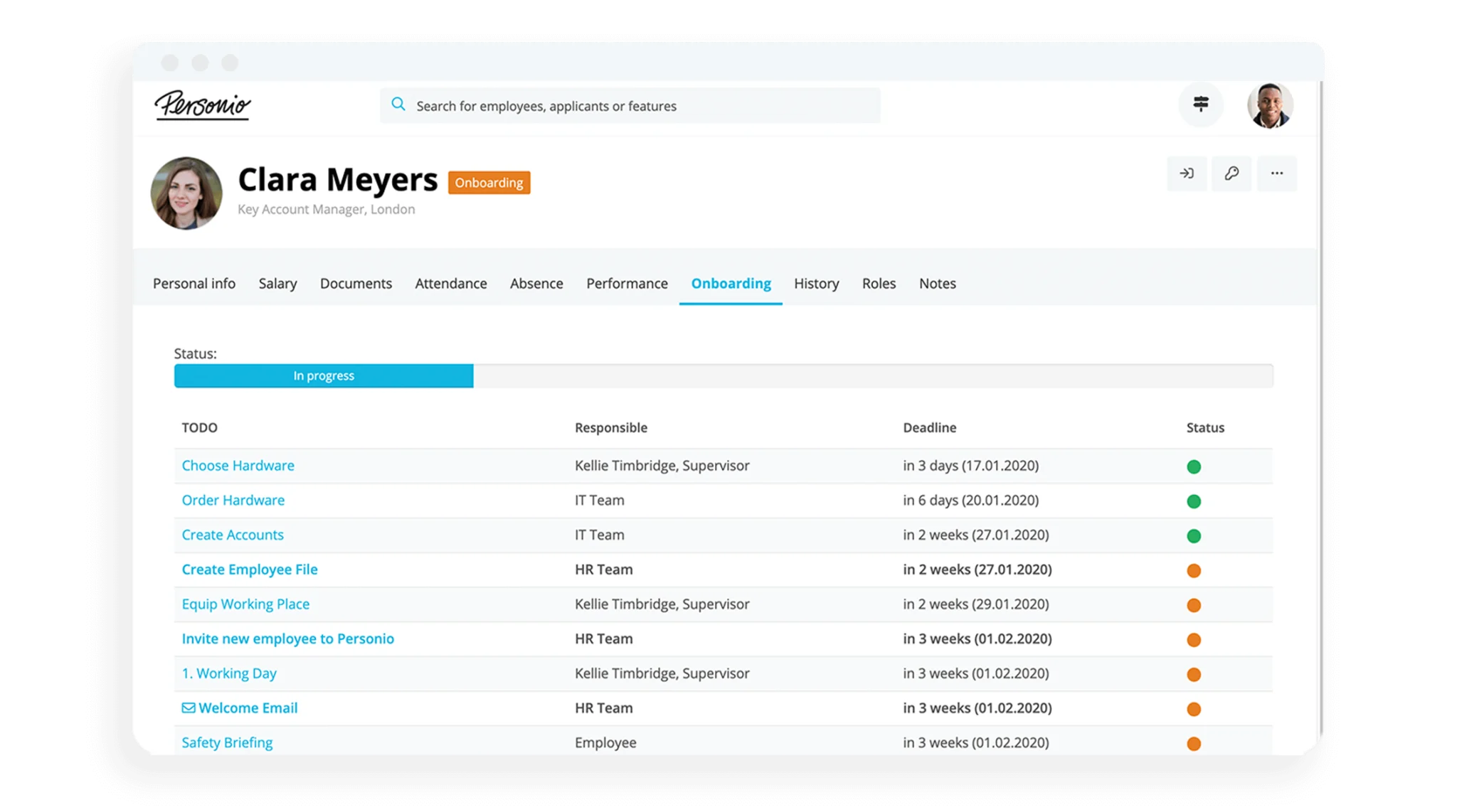
Make sure an employee has signed and returned their contract (if this hasn’t already been done before they start) and check all their official working information including:
Personal contact details
National Insurance (NI) number
P45
Work eligibility including visa or passport information (if applicable)
Background checks (including CRB checks)
Bank account details
2. Make sure they know your policies
Share your employee policies and procedures with them – including information on any portals, noticeboards or other locations like Slack or your intranet.
This should include:
Company culture information
Policies relevant to them
Procedures they must follow
Where to find an employee handbook (if you have one)
3. Cover the essentials
At a minimum, it’s important for your employees to know about their working terms and conditions. Even if this is included in your policy, handbook or employee manual, be sure to point out and make sure they understand the following (and where to find this information):
The facilities you provide
Their working hours
Expected breaks and holidays
Paternity, maternity or shared leave
What happens when they’re sick
How their pension works
Who their manager is
What to do if they have queries, complaints or need help
4. Keep them safe
It is a legal requirement in the UK to ensure relevant health and safety information is covered as soon as an employee starts. This includes:
Any precautions they must take to keep them safe
Any training, or Personal Protective Equipment (PPE) they might need to do their job safely
What they should do if there’s an accident, emergency or in case of a fire
5. Get them set up and ready to work
There’s nothing more frustrating than starting a new job and not being able to work. At the very minimum, an employee must have access to the locations, tools and equipment they need.
Depending on the nature of their work this can include providing:
Laptops and a mobile phone
Access to your work networks (including wifi passwords and relevant logins)
Entry to the building (a key, key code, fob or passwords)
Instructions on how to get into and use any social networks (e.g. Slack/Messenger etc.)
6. Set the right tone
It is absolutely critical that from induction day, employees feel welcomed into your organisation. When getting them started, you might want to:
Arrange a tour of the company’s facilities
Tell them about the company’s vision, mission and values
Provide printed documents so they don’t forget critical information (or give them a way to write the key information down – branded company pens are a nice touch)
Set up meetings for them to meet key people they’ll be working with
Tell them about training and potentially book it in
Assign an ‘onboarding buddy’
Arrange regular ‘check-in’ meetings with their boss
Introduce them to the wider team by email
Click here for a collection of introduction emails to colleagues (with templates).
7. Help them see what success looks like
This goes beyond discussing their roles and responsibilities. It also helps enormously to explain your company’s standards and expectations, where to go when they have questions and if possible, to give employees a plan for how to get started with the job they need to do, and even what it means to be a great employee at your organisation.
This also might include familiarising employees with your performance processes and how your organisation runs reviews. Do you have a process in place? If not, start by checking out our collection of performance review templates today.
Turn your employee induction checklist into automated onboarding
Having a seamless employee induction is far simpler when the whole process is put together ahead of time. Using Personio’s onboarding feature, you can ensure that all of your tasks are completed and that an employee has an amazing first day in their new role.

